Miso paste is traditional Japanese seasoning produced by fermenting rice, barley and/or soybeans, with salt and koji malt.
Infinite varieties of miso with the local colour is made the way of working of a microbe playing its part which is important during the fermentation aging by climate, different storehouse, and being involved complicatedly the conditions such as ingredients and environment, the quality of the water.

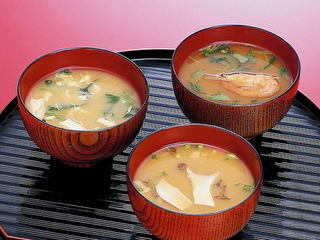
The miso which is made in all over Japan all over the country so that it is said, “there is not the area without a brewery of the miso.” Review about miso over again.
■ Types of Miso Paste
‐ Rice Miso
The miso fermented in conformity to a soybean, and malted rice mature. It is occupied 80% produced in Japan. Because it is made in a wide area from the north to the south, there are various kinds in a colour, taste.
‐ Bean Miso
Bean miso is a kind of miso which soybean and salt are main ingredients. It takes a unique method that is added malt and roasted barley, rye or so on to a miso ball (made steamed soybean into a ball shape). The aging takes approximately three years. It is a characteristic that it is used mainly in the Tokai, Nakagyo district, and there are heavy taste and some bitterness.
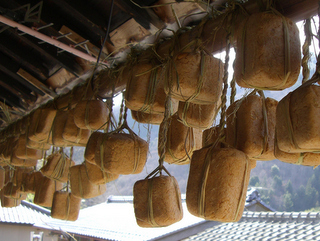
▲Miso Balls
* The bean miso is a model of “dark red miso”, but is often called as compounded rice miso and seasoning with bean miso now.
‐ Barley Miso
Miso made with barley malt in substitution for rice. It is called another name “country miso”. Having a sweet smell peculiar to wheat, it features silky sweetness.
‐ Combined Miso
It is mixed two or three kinds of miso and enjoyed the change of taste and the flavour. It seemed to begin with kaiseki cuisine. It is used compounding properly by a season and ingredient materials.
‐ Blended Miso
The blened miso is combined a sweetener, seasoning and rice miso based on bean miso. It is famous for dark red miso.
| Ingredient | Taste and Colour | Ichiba Junction Items | |
| Rice Miso |
Sweet (low salt) |
white |
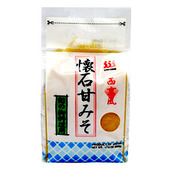 |
| red | |||
| Mild | light | ||
| red | |||
| Salty | light |
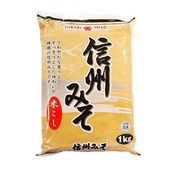  |
|
| red | |||
| Barley Miso | Mild | ||
| Salty | |||
| Bean Miso | |||
| Combined Miso |
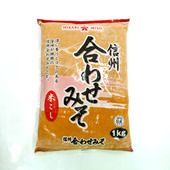 |
||
| Blended Miso |
 |
||
▲Difference between Red miso and White miso
Colour difference is caused and affected of “Maillard Reaction*” which occurs during fermentation and aging process.
*Maillard Reaction
A chemical reaction between amino acids and reducing sugar. This reaction increases its frequency in high temperature.
– White miso
short immersion and soy beans are simmered without steaming to take away water soluble component like sugar and this removal restrains millard reaction.
– Red miso
Long immersion and soy beans are long-steamed in high temperature which causes protein heat denaturation of an enzyme.
■ Nourishment and Health Benefit
Soybean itself which is the main ingredient of miso, and including protein, lipid sugar, vitamins, and minerals are nutritious. Those ingredients of soybean become easy to digest and absorb by fermenting and the nutritive value improves more, too.
| Protein | Cholesterol Decline, Elasticity Maintenance of Blood Vessel |
| Vitamin B12 | Hematopoietic Action, Prevention of Brain-fag |
| Vitamin E | Prevention of aging |
| Enzyme | Digestion Promotion |
| Isoflavone | Oxidization Prevention, Getting rid of Stiff Shoulder |
| Colin | Prevention of Aging, Prevention of Fatty Liver |
| Lecithin | Cholesterol decline, Prevention of Dementia |
▲Anticancer action of the miso
It is said that “fatty acid ethyl” made by fermentation has a control action against the cause of cancer. The research showed that the stomach cancer death rate lowers as a person with much number of times to drink miso soup and it is checked that a cancer incidence decreases by the rat animal experiment.
A doctor is not necessary with one cup of miso soup a day! Let’s cook with miso!
Next time, introducing store method and cooking tips of miso.
☆visit ICHIBA JUNCTION now!



